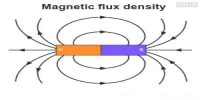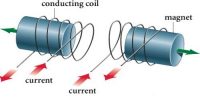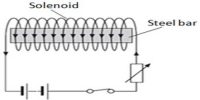Magnetic Domain in Magnetic Field
There are some materials when placed in the magnetic field acquire strong magnetic field towards the magnetizing field. There are innumerable, very small regions in a ferromagnetic material, whose dimension is of the order 10-2 cm (nearly) and in each region, there are 1015 to 1017 atoms. These are spontaneously magnetized. These small regions are called magnetic domains or ferromagnetic domains.
In another way, it can be said that in ferromagnetic material between volume 1012 m3 to 1018 m3 there are innumerable magnetic regions containing 1015 to 1018 atoms where magnetic dipoles are aligned in a particular direction as a result of which they behave like independent magnets. These magnetic regions are called magnetic domains. In unmagnetized ferromagnetic material, these domains are arranged randomly [Fig. (a)]. So, this piece of metal does not behave like a magnet. Again, when this piece is placed in an external magnetic field these domains align them along the field direction and acquire permanent magnetism [fig. (b)]. It the first magnetic field is removed even then its magnetism remains. Many adjacent magnetic dipoles in a ferromagnetic material remain aligned in a particular direction. The region where they remain aligned in a particular direction that region is the magnetic domain. So, a domain has a net moment. If it would have been possible to isolate one domain, it would act as a permanent magnet.

Cast iron is used in a coffee machine. Due to the affluence of the external field, these domains get aligned and form a magnet. Again, if the external field is removed magnetism is destroyed. So the domain’s again become random. Again steel is used to get a permanent magnet. In the unmagnetized state also the domains remain orderly arranged.















